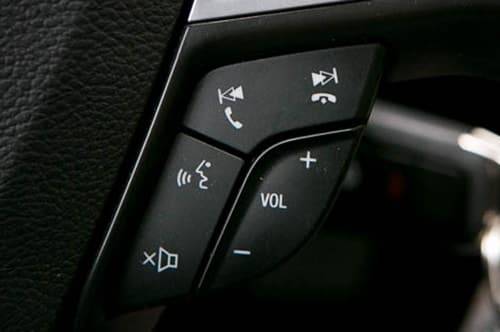AAA: Hands-Free Voice Recognition Systems Still Distracting


Ever felt like the voice recognition from your car or smartphone garbled more than it understood? You’re not alone. In J.D. Power’s 2014 Initial Quality Study, voice-recognition systems added significantly to the headaches in new or redesigned cars, which often pack more of the technology than models unchanged from the previous year. Now a new study from AAA finds that voice recognition isn’t just annoying; it can be dangerous.
Related: Distracted Driving Campaign Targets ‘Big Fat Myth’ of Hands-Free Safety
And it’s not just in-car systems; Apple’s Siri personal assistant proved even more distracting. AAA and the University of Utah conducted the multiyear study, which coded distraction categories from 1 (least distracting) to 5 (most distracting) through driving simulators and real-world test cars rigged with measurements for driver reaction times, plus dozens of real drivers.
The upshot: Even with your eyes on the road and hands on the wheel, what you try to accomplish through voice recognition can cause unsafe levels of distraction — but so does the effectiveness of the system you’re using. AAA simulated a “perfect” system that accurately executed every voice command by having a researcher behind the scenes listening to a driver’s commands and carrying them out via computer. With the errorless system, measurements indicated category 3 mental distraction for some fairly involved tasks, like updating social media. The same tasks through Siri, meanwhile, amounted to category 4 distraction.
“It was a pretty high jump” between systems, said Jurek Grabowski, research director for AAA’s Foundation for Traffic Safety. “We speculate that it’s probably due to several things that include the [iPhone’s] computer systems misinterpreting and increasing the frustration level in the drivers [or] the computer systems not being able to handle pauses in the conversation.”
This comes as the industry incorporates Siri into more cars via Siri Eyes Free and, more recently, Apple CarPlay. Researchers used iOS 7, not the more recent iOS 8, during the study.
“AAA did not test CarPlay or Siri Eyes Free, which we’ve designed for in-vehicle experiences so users can access the apps they want in the car with minimized distraction,” an Apple spokesperson responded to Cars.com in an emailed statement. “CarPlay and Siri Eyes Free intuitively use your vehicle’s native controls so you don’t need to pick-up and look at your phone while driving. These experiences are tailored so you only have access to iPhone apps that are optimized for the car and make sense for an in-vehicle experience.”
The differences went beyond smartphones. Researchers put drivers in six different test cars to evaluate distraction levels from various automakers’ own proprietary voice-recognition systems. Drivers were told to ask the systems to change the radio station and dial someone via Bluetooth. Toyota’s Entune system had the lowest distraction (1.7), followed by Hyundai’s Blue Link (2.2), Chrysler’s UConnect (2.7), Ford’s Sync with MyFord Touch (3.0), Mercedes’ Comand (3.1) and Chevrolet’s MyLink (3.7).
“Short, brief commands to the car system weren’t all that distracting,” Grabowski said. But navigating through complex menu schemes added much more cognitive demand, particularly if systems that Grabowski characterized as less “robust” didn’t recognize several different ways people might ask to do the same thing — dialing up a radio station, for example.
Without any variability from different systems, escalating activities predictably ramped up the mental distraction. AAA coded listening to the radio as a category 1 distraction; talking on a hands-free cellphone was a category 2 distraction. Hearing or composing email on a perfect voice-recognition system was a category 3.
Researchers never observed category 5. But it would be “like balancing your checkbook in your head as you’re going down the road,” AAA spokeswoman Nancy White told us. “It involves memory and math tasks.”
In the meantime, AAA hopes its research helps manufacturers make hands-free systems less complicated, more accurate and generally easier to use, all in an effort to minimize distraction. The agency also encouraged motorists to do their part by limiting use of most voice-based technologies while driving.
Matt Schmitz contributed to this report.
Editor’s note: This story was updated on Oct. 7 to reflect Apple’s response.
Cars.com photo by Evan Sears

Former Assistant Managing Editor-News Kelsey Mays likes quality, reliability, safety and practicality. But he also likes a fair price.
Featured stories




